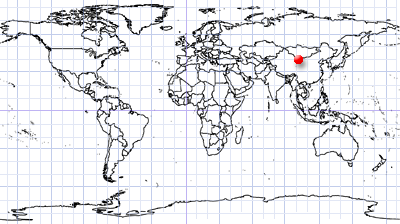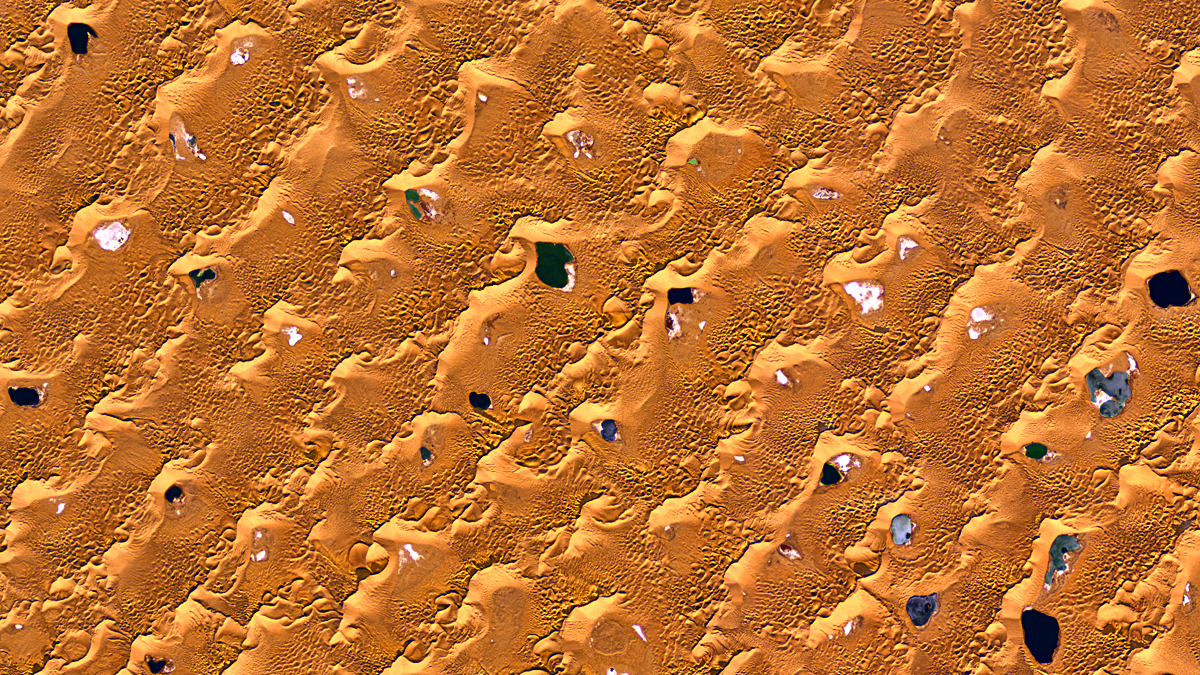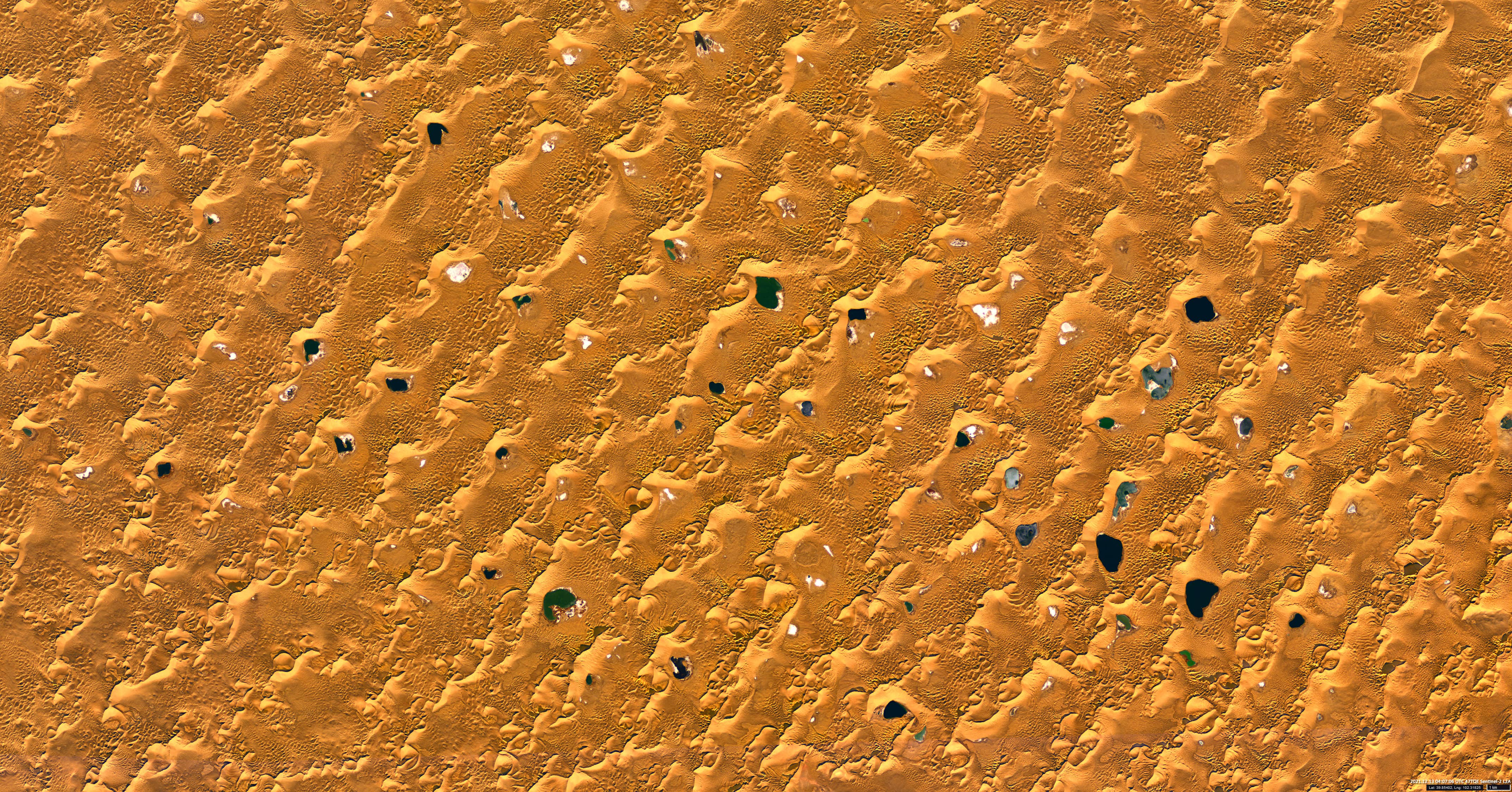
Spring-fed lakes and singing sands
Badain Jaran Desert | Western Inner Mongolia | China
Date of acquisition: December 13th, 2021 | 04:07:06 UTC
Sensor: Sentinel-2B L2A
Coordinates: 40.07°N, 102.21°E
The Badain Jaran Desert, located in western Inner Mongolia, is the third largest desert in China. It is a home to some of the tallest stationary dunes on Earth, with some reaching an elevation of more than 500 m. The Bilutu is the world’s highest stationary dune rising over 500 meters while the peak has an altitude of 1,609 meters above sea level.
The desert features over 100 spring-fed lakes. The lakes are fed by groundwater, that is located under the gravel deposits. The groundwater reservoirs themselves are fed by precipitation and melted snow from the mountains, which are hundreds of kilometres away from the desert. Groundwater is fresh water, but most of the lakes are salty or brackish. This is due to the high evaporation rate, leaving behind any dissolved salts and minerals, which form a white salt crust along the shores of some lakes.
The Badain Jaran Desert is also a region where the phenomenon called “singing” or “humming” sands takes place. It is caused by the fact that an electrostatic charge is formed when the upper sand layer is blown away by the wind. The result is a thick, low-frequency noise, reminiscent of the buzzing of a propeller flying overhead, lasting about a minute or more.




